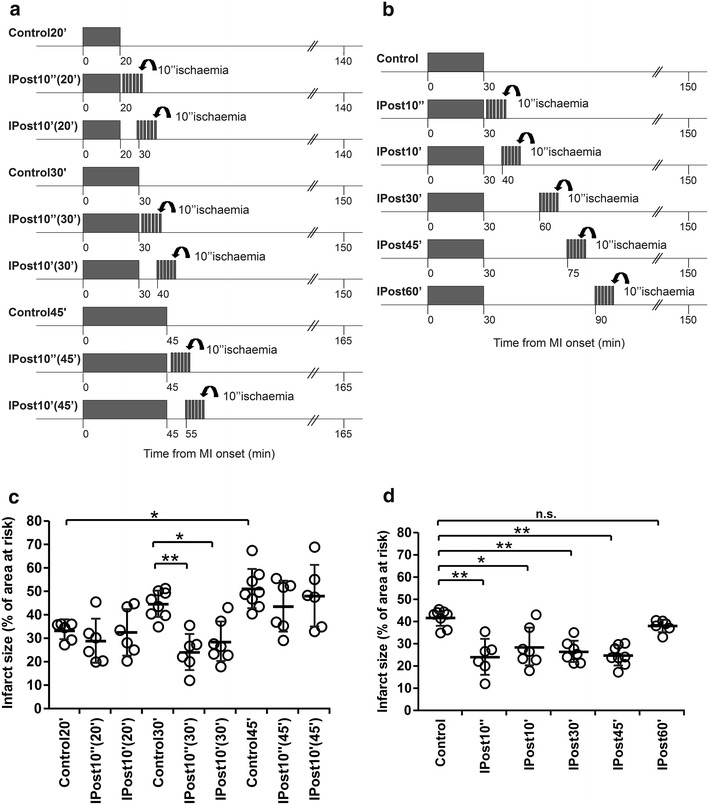Fig. 1.

a Illustration of the experimental protocols. Myocardial infarction (MI) was induced in anaesthetized rats by left descending coronary artery (LAD) occlusion followed by 120 min of reperfusion (I/R). Ischaemic postconditioning (IPost) included six cycles of I/R (10 s/10 s) starting 10 s (IPost10″) or 10 min (IPost10′) after the onset of reperfusion which followed periods of LAD occlusion lasting either 20 min [IPost10″(20′), IPost10′(20′)], 30 min [IPost10″(30′), IPost10′(30′)] or 45 min [IPost10″(45′), IPost10′(45′)]. b Illustration of the experimental protocols. MI was induced by 30 min of LAD occlusion followed by 120 min of reperfusion. IPost was applied 10 s (IPost10″), 10 min (IPost10′), 30 min (IPost30′), 45 min (IPost45′) or 60 min (IPost60′) after the onset of reperfusion. c IPost effectively reduces myocardial ischaemia/reperfusion injury only when applied after a period of LAD occlusion lasting 30 min. d IPost reduces myocardial ischaemia/reperfusion injury when applied 10 s, 10, 30 or 45 min after the onset of reperfusion which followed periods of LAD occlusion lasting 30 min. Infarct sizes are presented as percentages of the areas at risk. Individual data and mean ± SD are shown. **P < 0.01; *P < 0.05; n.s.—not significant
